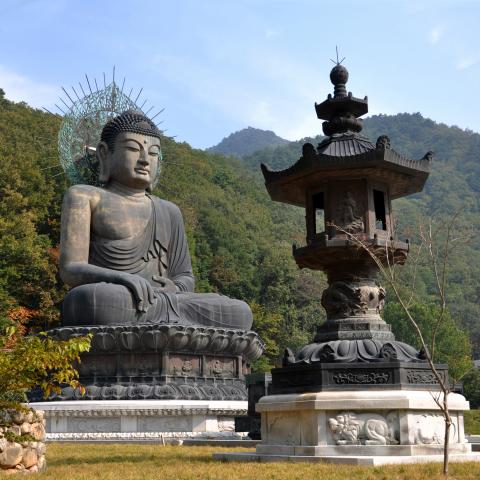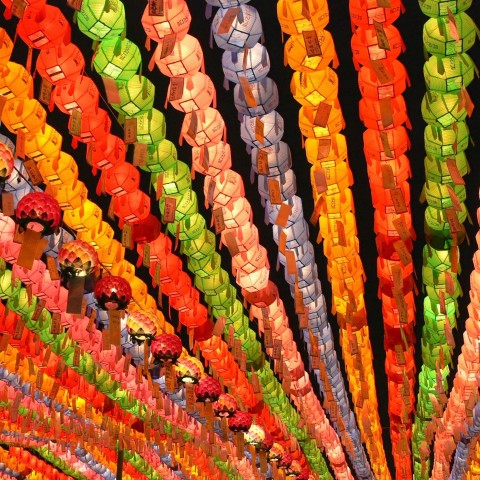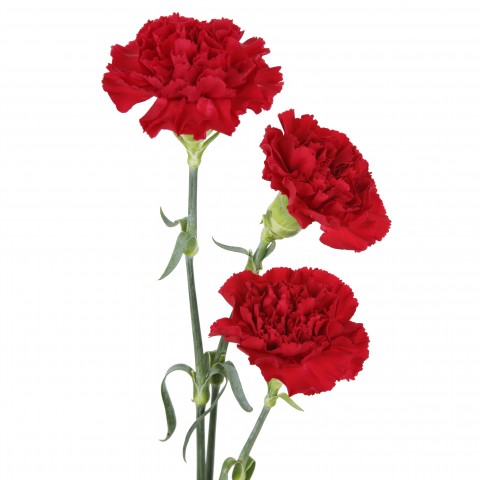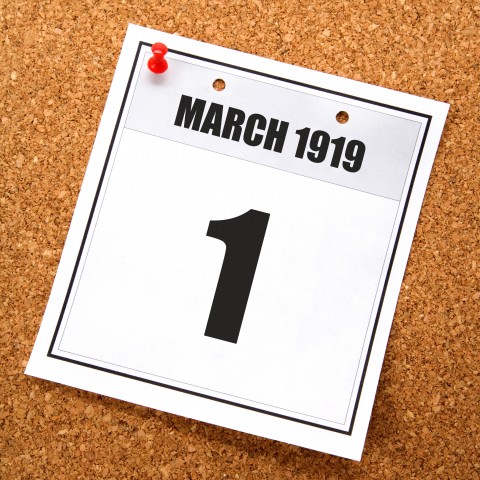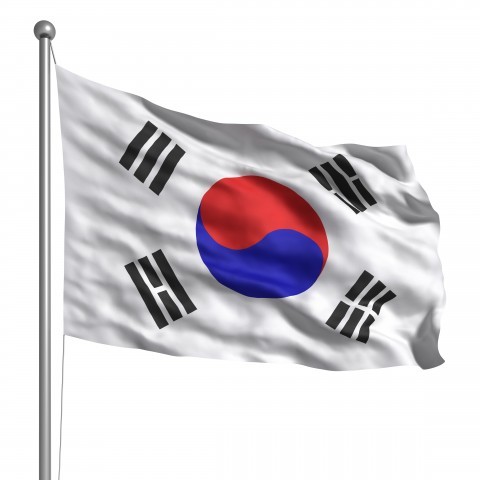“Anger” is 화 (hwa) in Korean and originates from the Chinese character for “fire,” which is 火. So when someone says 나 너무 화가나! (Na neomu hwagana!), can you imagine how angry that person may be?
In this article, we’ll introduce you to the top 20 Korean angry phrases to help you express yourself in Korean.
You get angry. Everyone gets angry. People want to express themselves. Let’s learn some angry Korean phrases!

Table of Contents
- Angry Korean Imperatives
- Korean Angry Warnings
- Korean Angry Blames
- Describing How You Feel in Korean
- Bonus: How to Calm Yourself Down When You’re Angry
- How KoreanClass101 Can Help You with Korean
1. Angry Korean Imperatives
We’ll start with angry Korean phrases that are perfect for telling others what you want them to do (or not do!).
1- 닥쳐 (dakchyeo) “Shut up”
Example:
- 야 닥쳐! 말도 안 되는 소리 하지 마.
Ya dakchyeo! Maldo an doeneun sori haji ma.
“Shut up! Stop talking that nonsense!”
2- 저리 가! (jeori ga!) “Go away”
Example:
- 네가 보기 싫다. 저리 가.
Nega bogi silta. Jeori ga.
“I don’t want to see you. Just go away.”
3- 그만해! (geumanhae!) “Stop it!”
Example:
- 그만해! 이제 그만 좀 싸워!
Geumanhae! Ije geuman jom ssawo!
“Stop it, guys! No more fighting!”
4- 적당히 해 (jeokdanghi hae) “That’s enough”
Example:
- 야! 적당히 해!
Ya! Jeokdanghi hae!
“Hey! That’s too much!”
5- 집어치워 (jibeochiwo) “Cut it out”
This phrase has two words combined together, which are 집다 (jipda), meaning “to pick up,” and 치우다 (chiuda), meaning “tidying up.” The literal translation is “pick up and tidy up.”
You can also use this phrase in a joking way with your friends.
Example:
- 하하하. 야 농담 집어치워라.
Hahaha. Ya nongdam jibeochiwora.
“Hahaha. Hey, cut it (your joke) out.”
6- 꺼져 (kkeojyeo) “Get lost”
Example:
- 야, 꺼져.
Ya, kkeojyeo.
“Hey, get lost.”
2. Korean Angry Warnings
Below is a list of angry phrases in Korean you can use to let someone know it’s time to back off.
7- 너랑 말 하고 싶지 않아 (neorang mal hago sipji ana) “I don’t want to talk with you.”
Example:
- A: 아직도 화났어?
A: Ajikdo hwanasseo?
A: “Are you still angry with me?” - B: 됐어. 너랑 말 하고 싶지 않아.
B: Dwaesseo. Neorang mal hago sipji ana.
B: “I don’t want to talk with you.”
8- 너랑 만나고 싶지 않아 (neorang mannago sipji ana) “I don’t want to see you again.”
Add 다신 (dashin), the shortened version of 다시 (dasi), meaning “again,” right after 너랑 (neorang) to express your anger more strongly. The meaning becomes “I don’t want to see you ever again.”
Example:
- A: 말 시키지마. 너랑 다신 만나고 싶지 않아.
A: Mal sikijima. Neorang dasin mannago sipji ana.
A: “Don’t talk to me. I don’t want to see you ever again.” - B: 진심이야?
B: Jinsimiya?
B: “Do you really mean it?”
9- 입 조심해 (ip josimhae) “Watch your mouth.”
Example:
- A: 현아야 사람들이 너 입 조심하래.
A: Hyeonaya saramdeuri neo ip josimharae.
A: “Hyuna, people said that you should watch your mouth.” - B: 나? 내가 왜?
B: Na? Naega wae?
B: “Me? Why?”
10- 장난하냐? (jangnyanhanya?) “Are you kidding me?”
Example:
- A: 야, 진짜 장난하냐?
A: Ya, jinjja jangnanhanya?
A: “Dude, seriously, are you kidding me?” - B: 야, 진정해. 장난이야.
B: Ya, jinjeonghae. Jangnaniya.
B: “Chill. I was just kidding.”
11- 마지막 경고다 (majimak gyeonggoda) “This is my last warning.”
Example:
- A: 그 사람한테 마지막 경고는 줘야할 것 같습니다.
A: Geu saramhante majimak gyeonggoneun jwoyahal geot gatseumnida.
A: “We have to give him a final warning.” - B: 정말입니까?
B: Jeongmarimnikka?
B: “Are you sure?” - A: 마지막 경고야.
A: Majimak gyeonggoya.
A: “This is my last warning.” - B: 네 경고 따윈 무섭지도 않아!
B: Ne gyeonggo ttawin museopjido ana!
B: “I’m not even scared of your warnings!”
3. Korean Angry Blames
Are you looking for an angry expression in Korean to blame the other person for something? Or to let them know you don’t approve of what they did? Here you go:
12- 너 미쳤어? (neo michyeosseo?) “Are you out of your mind?”
Example:
- A: 야, 너 미쳤어?
A: Ya, neo michyeosseo?
A: “Are you out of your mind?” - B: 어, 나 미쳤어. 어쩔껀데?
B: Eo, na michyeosseo. Eojjeolkkeonde?
B: “Yeah, I am crazy. So what?”
13- 상관하지 마 (sanggwanhaji ma) “It’s none of your business.”
There are two other phrases that are commonly used in Korea. The first phrase is 네 알바 아니잖아 (ne alba anijana). This has exactly the same meaning as 상관하지 마 (sanggwanhaji ma). The only difference is that 네 알바 아니잖아 (ne alba anijana) shows more aggressiveness and anger toward the person you’re speaking to.
The second phrase is 너나 잘해 (neona jalhae), which means “Just do well yourself.” This phrase is commonly used among friends to say “Mind your own business.”
Example:
- A: 뭐 보고 있어? 나도 좀 보자!
A: Mwo bogo isseo? Nado jom boja!
A: “What are you looking at? Let me have a look, too.” - B: 그만해, 상관하지 마
B: Geumanhae, sanggwanhaji ma.
B: “Stop it, it’s none of your business.” - A: 너 빨리 말해, 어제 뭐했어?
A: Neo ppalli malhae, eoje mwohaesseo?
A: “Hurry up and tell me, what did you do yesterday?” - B: 네 알바 아니잖아!
B: Ne alba anijana!
B: “It’s none of your business!”
14- 네가 뭔데? (Nega mwonde?) “Who do you think you are?”
Example:
- A: 야 저 남자 너무 못생겼다 그치? 하하.
A: Ya jeo namja neomu motsaenggyeotda geuchi? Haha.
A: “Hey, that man looks hideous, doesn’t he? Haha.” - B: 네가 뭔데 그사람에 대해서 그렇게 말할 수 있냐?
B: Nega mwonde geusarame daehaeseo geureoke malhal su innya?
B: “Who are you to talk about him like that?” - 고상한 척 하지마. 네가 뭔데 그래?
Gosanghan cheok hajima. Nega mwonde geurae?
“Don’t be such a snob. Who do you think you are?”
15- 내 말 안듣고 있잖아 (nae mal andeutgo itjana) “You were not listening to me.”
Example:
- A: 야, 왜 강아지를 때려?
A: Ya, wae gangajireul ttaeryeo?
A: “Hey, why did you slap your dog?” - B: 내 말 안듣고 있잖아!
B: Nae mal andeutgo itjana!
B “(Because) He’s not listening to me!”

4. Describing How You Feel in Korean
Here are some useful phrases to effectively let someone know you’re angry in Korean, or to discuss other negative emotions you’re feeling.
16- 나 열받았어 (na yeolbadasseo) “I’m angry.”
Add 완전 (wanjeon), meaning “absolute,” or 진짜 (jinjja), meaning “really,” after 나 (na) to express your level of anger.
Example:
- 나 지금 완전 열 받았어.
Na jigeum wanjeon yeol badasseo.
“I’m so pissed off right now.”
17- 정말 짜증난다 (jeongmal jjajeungnanda) “I’m really annoyed.”
Example:
- 나 정말 짜증나 죽겠어.
Na jeongmal jjajeungna jukgesseo.
“I’m really annoyed.” (Literal translation: “I’m about to die over annoyance.” )
18- 완전 실망했어 (wanjeon silmanghaesseo) “I’m really disappointed.”
Example:
- 너의 그런 모습에 완전 실망했어.
Neoui geureon moseube wanjeon silmanghaesseo.
“I’m really disappointed because of your behavior.”
19- 아이씨! (aissi!) “To express anger or frustration”
Example:
- 아이씨 깜짝이야!
Aissi kkamjjagiya!
“Whoa! What a surprise!”
20- 속상해 (soksanghae) “I’m upset.”
Example:
- 오늘 지갑을 잃어버렸어. 아이씨 속상해!
Oneul jigabeul ileobeoryeosseo. aissi soksanghae!
“I lost my wallet today. I’m so upset!”
5. Bonus: How to Calm Yourself Down When You’re Angry
Everyone has the right to express themselves, and there’s no exception when it comes to expressing your anger. However, it’s good to be able to manage your anger (instead of letting it control you). Here are some tips to calm yourself down when you’re angry.
1- Try to breathe ten times
When you’re angry, your heart beat tends to increase, making it more difficult for you to think rationally. Try inhaling and exhaling slowly ten times to calm yourself down, and make sure to do this before trying to express yourself.
2- Go for a walk
Taking a walk helps you calm down and clear your thoughts. When you’re angry, so many negative thoughts go through your mind that it becomes difficult to cool down. Try walking outside for at least thirty minutes to alleviate stress and give your mind a boost.
3- Try to think of happy times to convert your negative feelings
Think of times when you felt happy, whether it was with your family, friends, or other people you care about a lot, because you deserve to be happy!
4- Try to find the cause of your anger
You don’t like being in crowded areas? Then try not to force yourself to go to those areas. Or does discussing politics or environmental issues upset you? Then try your best to avoid doing so. If you know what’s causing you to feel angry, then finding a solution will be easier.
5- Seek help
Even if you’ve already tried many methods to calm yourself down, managing anger is very difficult for some people. If you’ve been having difficulty managing your anger, it’s best to seek help.
Check out this page called 나는 화를 잘 내는 편일까: 분노 심리테스트 (Naneun hwareul jal naeneun pyeonilkka: Bunno simniteseuteu), which translates to “Do I Get Angry Easily?: Anger Test” to test your anger level!
6. How KoreanClass101 Can Help You with Korean
In summary, we’ve explained the definition of “anger” in Korean and introduced you to the top 20 Korean angry phrases. In addition, we also outlined five ways for you to manage your anger.
If you want to learn more about different emotion-related phrases, check out the pages below!
- “Feeling Happy? Learn the Top 20 Words for Positive Emotions“
- “Feeling Sad? Learn the Top 21 Words for Negative Emotions“
- “Phrases to Use When You’re Angry“
Before you go, let us know if you find these angry Korean phrases sufficient! Are there any angry situations you still want phrases for? We look forward to hearing from you!
Good luck!





















